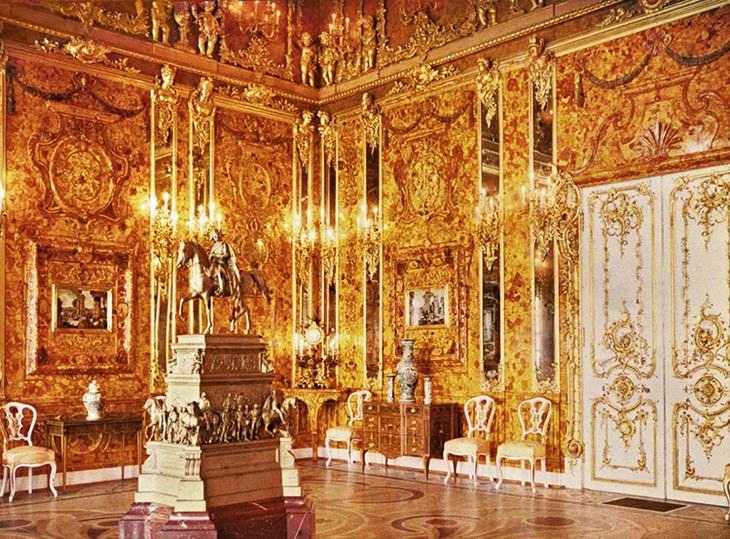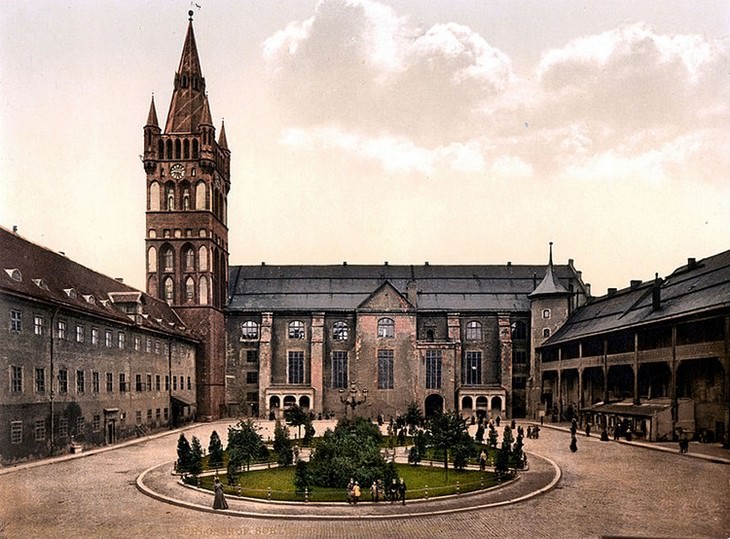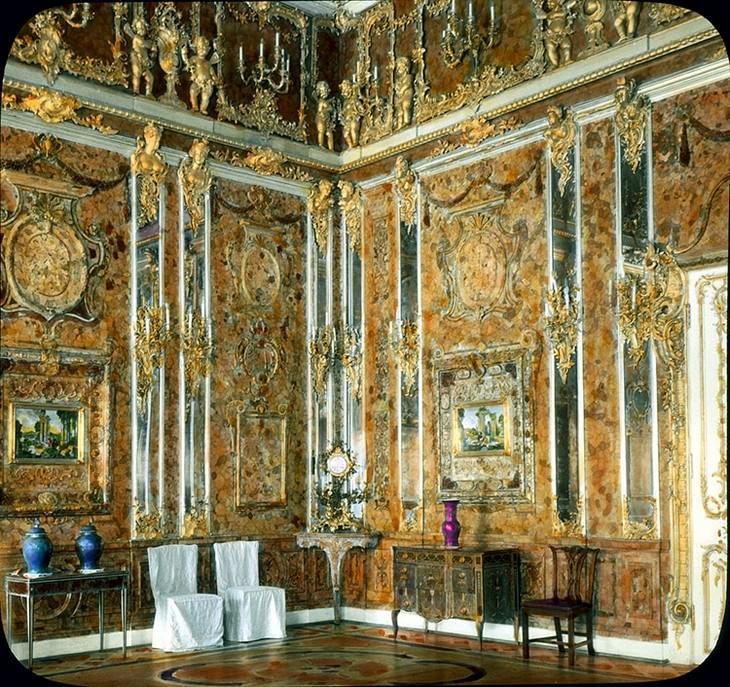



The Amber Room managed to survive the 1917 Revolution, but when Nazi Germany invaded the USSR in 1941, no national treasure in the country was safe. Soviet curators knew the valuable Amber Room was in great danger and tried to protect it by relocating it away from the front. However, when attempting to carry out the task, head curator Anatoly Kuchumov discovered the amber panels had become too brittle over the years, and concluded that the relocation would cause them too much damage. Instead, he ordered to cover the walls of the room with thin wallpaper, in the hopes that the Nazis would pass by it without realizing.
Unfortunately, that plan failed. Hitler was well aware of the Amber Room’s history and he saw it as German property that should be returned to its homeland. In only 36 hours, the Nazis uncovered the precious panels and dismantled the room completely. The panels were shipped to Germany and the room was re-erected in Konigsberg Castle. There it remained on display for the German people for two years. In 1943, when the war tides started to shift in favor of the allies, Hitler ordered all of the looted possessions in Konigsberg to be relocated. Once again the room was packed into crates and on the move, this time never to be seen again.

The fate of the Amber Room remains unclear to this day. Many conspiracy theories have developed since its mysterious disappearance. The simplest one is that the panels were not evacuated on time and were destroyed in the heavy bombings that took place in the city before it was finally overtaken by the Red Army in 1945. Others believe that the panels lie somewhere between the ruins of the Wilhelm Gustloff, a German ship sunken in the Baltic Sea. The wreck, however, had been dived many times and no trace of the Amber Room was found.
The KGB conducted thorough investigations around Konigsberg but to no avail. For a while, the remains of the room were believed to be hidden in the labyrinth of tunnels and chambers lying under the city. Again, nothing was found there. Claims regarding the whereabouts of the Amber Room kept piling up - it was suggested to be in an old salt mine on the Czech border, sunk in a lagoon in Lithuania, and even stripped down and shipped off to the US. Nothing ever lead to a conclusive answer.
The only pieces of the room ever recovered were a cabinet and a marble mosaic which a German soldier stole when the room was removed in 1941. It was in the possession of his son in 1997 when German authorities reclaimed it. After long and extensive research, the British investigative journalists Catherine Scott-Clark and Adrian Levy concluded in their 2004 book The Amber Room, that the eighth wonder was indeed lost in the Konigsberg bombings. They theorized the excessive investigation carried out by the KGB was a ruse to cover up the initial Soviet mistake of destroying their own beloved Amber Room.
Previous attempts to get to the bottom of the Amber Room’s story proved it to be a dangerous mission. Former German soldier and amateur historian Georg Stein dedicated a large portion of his life to finding the Amber Room - he ended up being murdered in a Bavarian forest in 1987. General Yuri Gusev, deputy head of Russia's foreign intelligence unit, died in a mysterious car accident in 1992, after being exposed as the source for a journalist investigating the disappearance.
In 1979, the Soviet government ordered a replica of the room to be reconstructed where the original once stood in Catherine Palace. The project took 25 years to complete and cost $11 million. Its opening in 2003 marked the 300th anniversary of St. Petersburg. Although it is a reproduction, if you’re ever in the area, the ‘new Amber Room’ is definitely worth a visit!